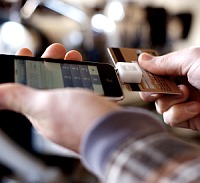Banks needed to drive mobile credit payment

New products are being introduced with the aim to jolt the mobile payment industry back to life, but it will still take heavy marketing efforts from banks to get the wheels in motion, notes an analyst.

The mobile payment industry has stagnated at the trial phase for the past years. This slow uptake has been attributed to a number of reasons, from the underdevelopment of the mobile payment ecosystem to the lack of NFC-enabled handsets for users. The absence of handset options, in particular, has been blamed for the underwhelming user reception to mobile payments.
New tools have since emerged in a bid to address this issue, touting abilities to convert any mobile phones into credit card readers.
According to Reuben Foong, smart cards research analyst with Frost & Sullivan, it is still "early days" for mobile payment and banks need to drive public education efforts to spur adoption.
Asked about the new tools, he told ZDNet Asia in an e-mail that the regulatory approval and process needed to bring these credit card-reading devices to Asia does not differ much from that of traditional credit card readers, which all require approval from credit card companies and retail banking institutions for transactions to be processed.
Mobile payment has largely come in the form of NFC (near-field communication) phones, which allow payments to be made through contactless readers. The users' credit card credentials are stored within an NFC-enabled chip in the phone.
A crop of products has since surfaced, aimed at reversing this model. Rather than link credit cards with individual devices, the new tools plug into mobile phones, turning them into portable credit card readers for quick transactions.
A project called Square, for example, plugs into the headphone jack of a mobile phone and allows users to swipe their credit cards. The data is transmitted to Square's backend servers, where payment is processed and sent to the intended recipient.
Another credit card reader attachment for Apple's iPhone, made by Mophie, also appeared at this week's Consumer Electronics Show (CES) 2010 in Las Vegas.
Both products are expected to facilitate convenient cashless payment for small vendors that do not have credit card payment facilities, or person-to-person transactions.
However, Foong noted that pushing the adoption of these products will require "strong marketing initiatives" on the part of the device makers, in order to convince both the public and banks about the value of the portable readers, he said.
"[The vendors] need to help banks and third-party payment gateway vendors realize that such devices open up a new market previously closed to credit card readers, [such as] very small businesses, home offices, direct sales personnel, and so forth", he said.
The public also needs to be educated on the benefits and potential applications of such devices, he added.
Banks, in turn, would be spurred to roll out credit card companion devices if there is demand for them, he said, noting the rising credit card adoption rate in the region.
Vendors of these payment products could also seek partnerships with banks, involving device promotions or giveaways, to encourage takeup, said the analyst.
Smart cards preferred for Asia
One barrier Foong sees hindering the implementation of such readers in Asia is the "="" class="c-regularLink" target="_blank" rel="noopener nofollow">deployment of smart card-based credit cards in the region.
The credit card attachments employ older magnetic strip technology, which is less secure and reliable compared to those embedded with smart card chips, he said.
The analyst added that most countries in the region have moved toward the chip-based cards, and as a result, may find the reader attachments less than ideal.
Online payment vendor, PayPal, last week announced it will allow users in the Asia-Pacific region to make mobile payment via the company's mobile app and Web site. Users can send funds to another individual and check their account balances from their mobile handsets.